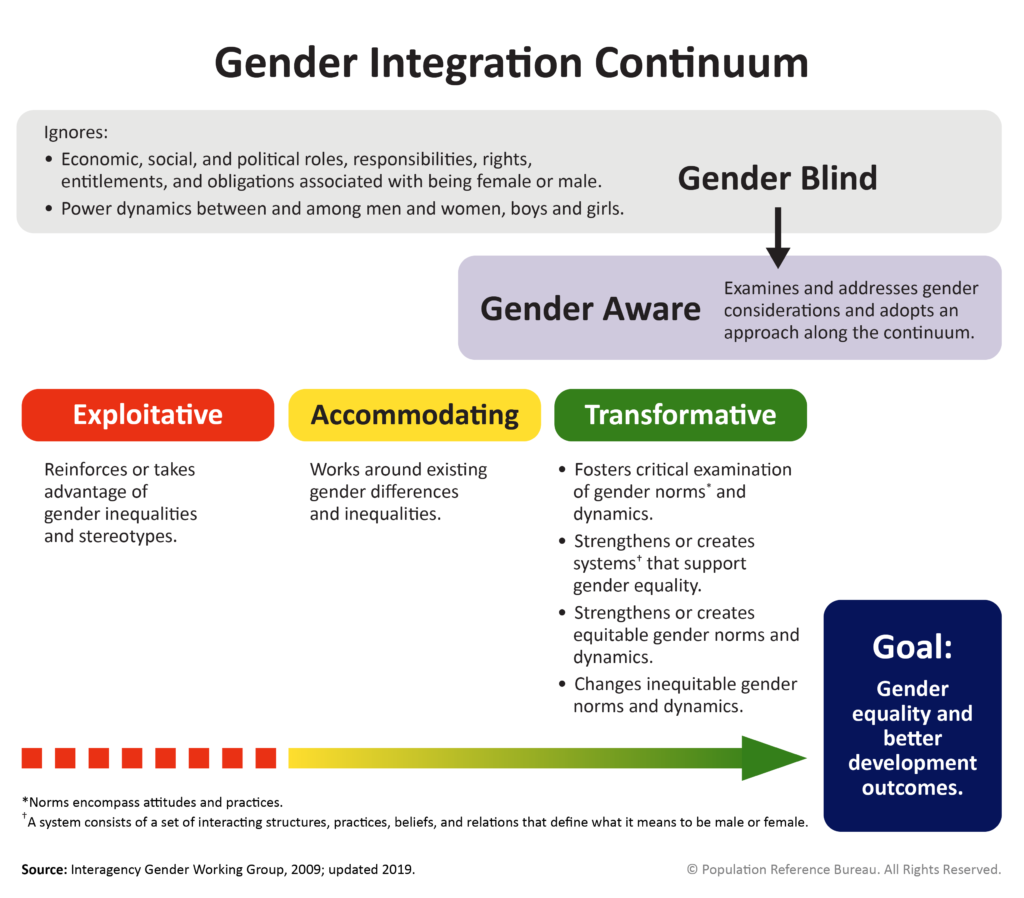Resources
Our training materials can be used to introduce a broad range of audiences and backgrounds to important concepts related to gender and health. Each training course focuses on one of five themes that complement the CORE Gender 101 agenda: Gender Integration, HIV + Sexuality, Safe Motherhood, Gender-Based Violence, and Constructive Male Engagement. The courses are designed to meet the geographic and technical needs of cooperating agencies, USAID Missions, and specific projects. Materials range from basics such as using a shared gender vocabulary and programmatic guidance, to user guides on how to conduct a gender analysis, to exercises for gender trainings. The trainings are geared to be used by anyone and with any audience, even those learning about gender for the first time!
Our popular Gender Integration Continuum framework is an important tool to assess how programs do (or do not) address gender and move them toward more gender-transformative actions. An updated User’s Guide for facilitating training on use of the continuum is available, along with other materials.
Using Global Data to Examine Child Marriage, IPV, and Legal Protection
Presentation summary of the journal article, "Child marriage and intimate partner violence: a comparative study of 34 countries" which uses DHS data to conclude women who marry as children are more likely to experience IPV globally and that national age of marriage laws may not be sufficient.
Gender Synchronization: Updating and Expanding the Concept
Hihglights updates to pending IGWG report "Gender Synchronization Update." The upcoming report will include a broader approach to gender as well as an updated methodology behind gender-transformative approaches in gender programming design.
School-Related Gender-Based Violence
This presentation provides an introduction and measurement frame work to school-related gender-based violence.
Men as Contraception Users: Programs, Outcomes, and Recommendations
Study summary highlighting different strategies to improve how family planning programming can better address the contraceptive needs of men.


